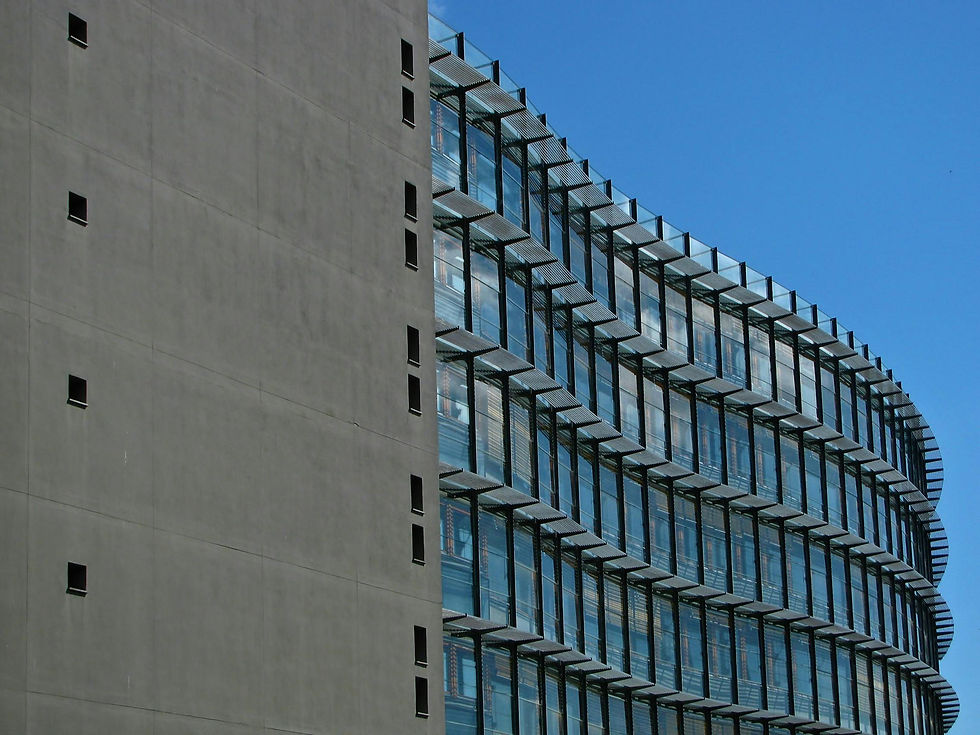The Rise of Mixed-Use Developments: What Tenants and Investors Need to Know
- eweinblatt3
- Sep 18
- 3 min read

Cities across the globe are undergoing a transformation. Traditional single-use buildings are giving way to mixed-use developments that integrate residential, retail, office, and recreational spaces into one dynamic ecosystem. These projects are redefining how people live, work, and interact—offering convenience and vibrancy that traditional developments often lack.
According to Ezra Weinblatt, understanding this trend is crucial because tenants and investors need to adapt their strategies to fully leverage the opportunities mixed-use projects present. Whether you’re a business seeking space or an investor exploring portfolio growth, mixed-use developments deserve close attention.
Here are the key things tenants and investors need to know about the rise of mixed-use developments.
1. Why Mixed-Use Developments Are Gaining Popularity
Key Drivers:
Urbanization is creating demand for denser, multifunctional spaces.
Consumers prefer convenience and lifestyle-centered environments.
Developers see value in diversified revenue streams across asset types.
Ezra Weinblatt’s Insight: Mixed-use projects create built-in ecosystems where people live, work, and shop—reducing risk for investors and increasing convenience for tenants.
2. Benefits for Tenants
What Tenants Gain:
Accessibility: Employees benefit from reduced commute times and access to nearby amenities.
Brand Value: A presence in vibrant mixed-use environments enhances brand visibility.
Talent Attraction: Locations within lifestyle-rich developments appeal to younger, urban-oriented workers..
Why It Matters: For companies, tenants and investors need to understand that office or retail space in a mixed-use development often means higher traffic, better visibility, and stronger community engagement..
3. Advantages for Investors
Investment Benefits:
Diversification: Revenue comes from multiple asset types (residential, retail, office).
Resilience: If one segment underperforms, others can stabilize cash flow.
Long-Term Value: These developments often command higher rents and stronger occupancy rates.
Ezra Weinblatt’s Insight: Investors should see mixed-use as a hedge. By combining different property types, they reduce exposure to market cycles in any single sector.
4. The Role of Community and Lifestyle
Why It Matters: Mixed-use developments aren’t just buildings—they’re communities. Retail, dining, entertainment, and green spaces foster a live-work-play balance.
What Tenants and Investors Need to Know:
Lifestyle amenities increase retention for both tenants and residents.
Walkability and vibrancy attract foot traffic, fueling retail performance.
A strong sense of place enhances long-term market value.
Ezra Weinblatt’s Insight: The best developments are those that feel like neighborhoods, not projects. Community integration is the real differentiator.
5. Design and Flexibility Considerations
Key Factors:
Flexible Spaces: Businesses prefer adaptable layouts that can evolve with demand.
Smart Infrastructure: Technology-driven amenities like high-speed internet and energy-efficient systems are expected.
Sustainability: Green certifications and eco-friendly practices enhance both tenant appeal and investor value.
What Tenants and Investors Need to Know: Future-proof design is essential. Spaces that adapt to hybrid work, changing retail formats, and evolving community needs will outperform.
6. Challenges and Risks to Consider
Potential Downsides:
High Upfront Costs: Development is capital-intensive and complex.
Operational Complexity: Managing multiple asset types requires strong expertise.
Market Risk: Success depends heavily on balancing demand across uses.
Ezra Weinblatt’s Insight:Mixed-use isn’t a guaranteed win. Tenants and investors need to carefully evaluate management quality, location strength, and long-term demand before committing.
7. The Future of Mixed-Use Developments
Emerging Trends:
Integration of wellness features like fitness centers and healthcare clinics.
Growth of micro-units and co-living spaces within larger ecosystems.
Expansion into suburban markets as people seek live-work-play options outside major cities.
What Tenants and Investors Need to Know: The model is evolving beyond urban cores. Suburban and secondary cities are ripe for developments that combine convenience, affordability, and lifestyle.
Conclusion: Why Tenants and Investors Need to Pay Attention
Mixed-use developments are not a passing trend—they are the future of urban and suburban real estate. They provide tenants with vibrant, amenity-rich environments while offering investors diversified, resilient income streams.
As Ezra Weinblatt emphasizes, tenants and investors need to evaluate these projects not just for immediate benefits but for their long-term potential. By understanding the dynamics of mixed-use developments, businesses can find spaces that enhance their brand, and investors can secure assets that deliver sustainable growth.
The rise of mixed-use is a reminder that real estate is no longer just about buildings—it’s about creating communities that thrive.


